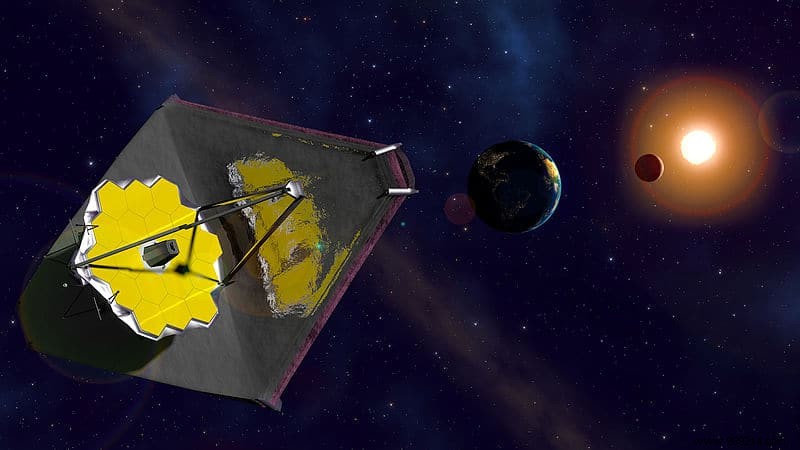NASA teams have just passed a critical test to demonstrate that the James Webb Space Telescope will respond to commands once in space. A priori, nothing (or almost) could once again delay its launch in October 2021.
When sending a probe, satellite or telescope into space, communication is key. Indeed, these machines may be the most sophisticated in the world, if you can not send them any command, it is useless. This is why, before each launch, engineers must ensure that the instruments will respond to commands sent from Earth (field segment test).
This week, NASA announced that the James Webb Telescope had successfully "answered the call".
As part of this test, commands to turn on, move, and use each of Webb's four science instruments were sent from his mission operations center to Space Telescope Science Institute (STScI) in Baltimore, Maryland.
Obviously the telescope is still on the ground, not in orbit. Also, to recreate its future space environment, special equipment was used to emulate the radio link between the instruments and the Deep Space Network. It is indeed this network of antennas which will be responsible for relaying the commands from the control center to the telescope. There are three sites spread all over the planet – in California, Spain and Australia – so as to guarantee the link with the observatory day and night.
"It was also the first time that we demonstrated the complete cycle of conducting observations with the observatory's scientific instruments" , explains Amanda Arvai, deputy manager of the mission operations division. In other words, the instruments didn't just light up:they also took action. This data was then sent back to the control center for analysis.

The James Webb Telescope was supposed to be launched next March, after already many postponements. Unfortunately, once again, the development of the instrument has been delayed in recent months. Obviously, the Covid-19 pandemic has not helped. NASA officials finally locked in a new date:October 31, 2021 .
This new deadline gives the US agency three months of additional "programming reserve". In other words, researchers will be able to lose as much time for technical or pandemic reasons by next October, and still launch the telescope on time. Barring a major event, it therefore seems reasonable to imagine that, this time, the deadlines can be met.
Once in space, the James Webb Telescope will be positioned around the Lagrange point L2, 1.5 million kilometers away of the Earth on the side opposite the Sun. From there, he will be able to probe the early Universe in infrared like never before. The telescope will then be able to observe the first stars and galaxies forming. It will also be able to measure the composition of the atmospheres of nearby exoplanets, thus making it possible to estimate their degree of habitability.